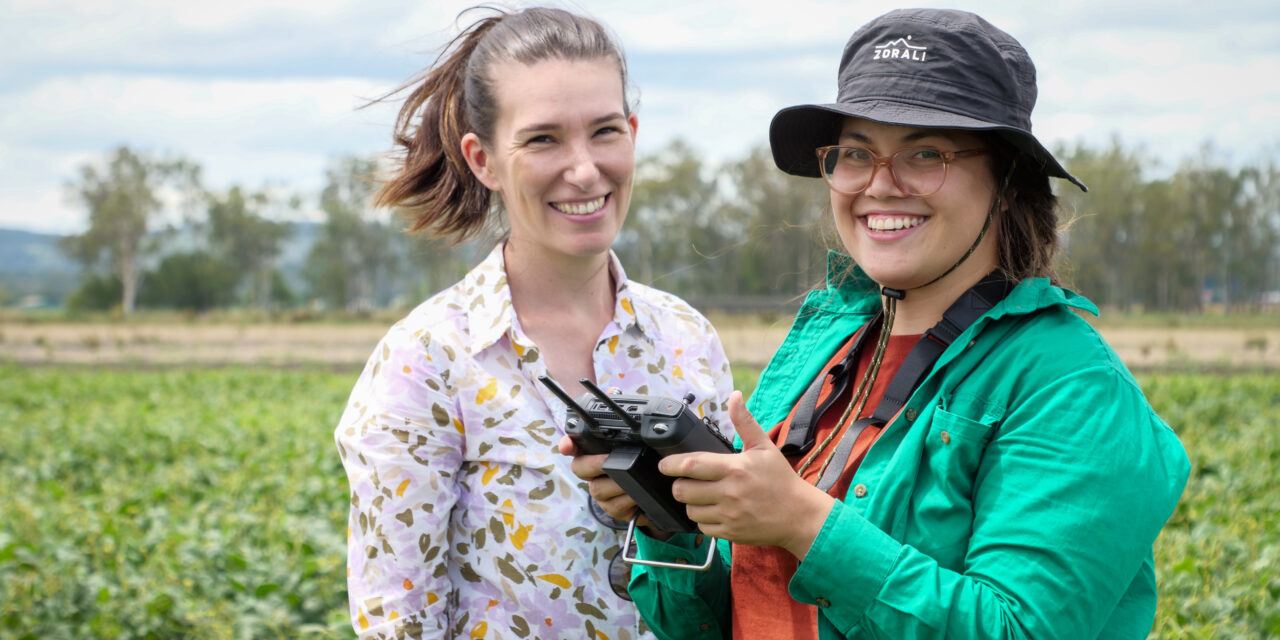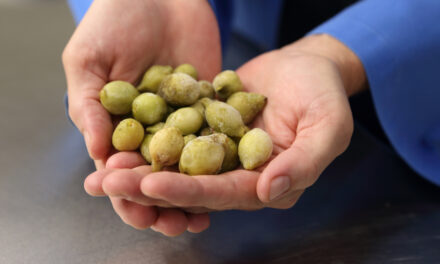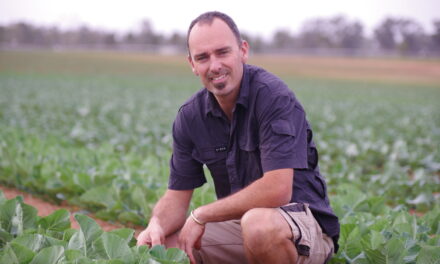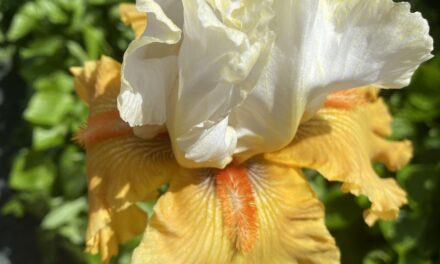A mungbean field trial at The University of Queensland’s Gatton campus is shedding light on improving yield stability of the high-value crop, currently selling for more than $1300 a tonne.
Dr Millicent Smith, a lecturer in crop physiology from the Queensland Alliance for Agriculture and Food Innovation (QAAFI) and the School of Agriculture and Food Science, is leading research to further understand the physiology of mungbean.
“Mungbean is a really important pulse crop for the northern grain growing region of Australia, providing economic and agronomic benefits to growers,” Dr Smith said.
“We’re trying to understand how the canopy develops and particularly how it intercepts light, and how the seed size and number of pods on the plant interact to influence yield.
“These physiological traits seem to influence the yield achieved.
“We can share new knowledge with agronomists and plant breeders who can then develop better management strategies and better varieties for growers.”
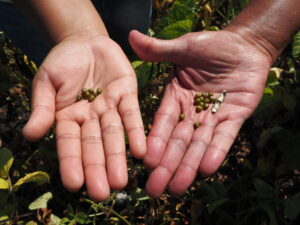
Mungbean seeds.
The research is supported through two complementary projects to understand complex crop dynamics.
“Our research focused on understanding how the canopy and pods develop, is supported by the International Mungbean Improvement Network, funded by Australian Centre for International Agricultural Research (ACIAR),” Dr Smith said.
“In addition, the Grains Research and Development Corporation (GRDC) is supporting the development of innovative approaches that allow us to increase the number of plots that can be measured in the paddock across the entire crop growth cycle.”
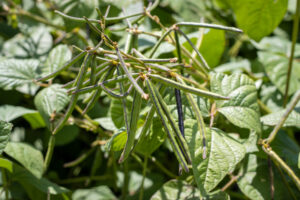
Mungbean crop at UQ Gatton, Queensland. Photo: Megan Pope
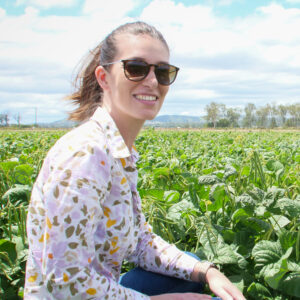
Dr Millicent Smith in the mungbean trial field. Photo: Megan Pope
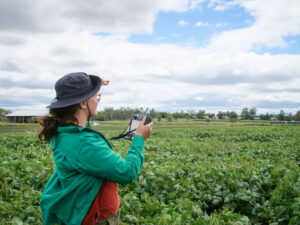
Shanice Van Haeften operating the drone in the mungbean trial paddock. Photo: Megan Pope

